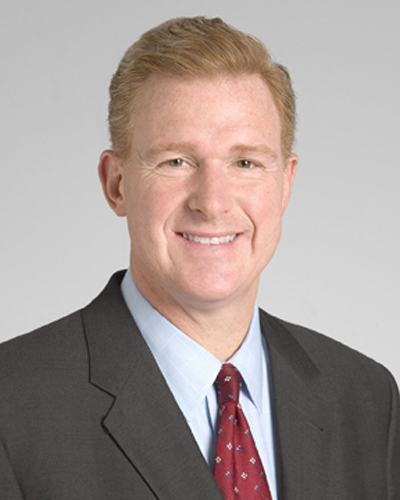Taking a local business national usually means going where the consumer is, but when the product is an immovable object, like a medical campus that includes around 41,200 employees, the challenge is a bit different.
Hospitals are generally a local business, but Cleveland Clinic’s is both local and national. Speaking at a Social Media Week talk Wednesday, the hospital’s chief marketing and communications officer, Paul Matsen, said this means the medical facility is competing against local rivals as well as regional giants like Mayo Clinic and Duke University.
The micro-level competition is thick for both patient and business reasons. On the patient side, hospitals have to find a way into a healthcare conversation that has a very tight partnership.
The “local healthcare provider relationship is the most trusted one . . . the most trusted, the most valued,” said Matsen. “If you have awareness of your hospital, it’s probably your local hospital. Patients in Northeastern Ohio, he added, were bombarded with eight local TV campaigns by rival hospitals in 2012.
At the same time, Matsen said the clinic’s marketing has to have a national impact, because about half of main campus revenue comes from people living outside of the Buckeye State. This puts greater pressure on messaging because the target group consists of very ill patients who are being encouraged to leave family and friends and travel cross-country to seek treatment in Cleveland.
And yet, the organization has managed to turn more than 75,000 internet leads—meaning surfers who click on links from paid search and downloaded information—into 6,500 patients in the last 12 months. This effort, which comprises about 20% of its paid media budget, includes over 100 distinct campaigns and has delivered an ROI of between 1500% and 2000%. Cleveland Clinic is also tending to a mailing list of 1.3 million email subscribers, which promises regular content and branding impressions.
Matsen said the key has been homing in on a discrete patient demographic of 15 million potential patients who would be willing to make the Ohio trek and to appeal to them at one of the three stages of health engagement – general awareness, information gathering and action. The clinic has done this through a mix of earned media, owned media—including providing brand-able content news organizations can use, much like the JAMA network’s approach—and paid local and national promotion.
Among its tools for patient engagement are the 1,500 videos on the Cleveland Clinic’s website (surgical procedures are most popular), 1,100 videos on YouTube and regular blogging at HealthHub from staff across the clinic’s expertise. In addition, CEO Delos Cosgrove blogs on LinkedIn.
In addition to banner ads that allow patients to search for clinic-provided content, the organization also has a second-opinion ad that links visitors to its second opinion service. As a result, “Cleveland Clinic is the most visited hospital site in the US,” Matsen said.
Evolution and continuity are also key components of successful outreach. The hospital recently refreshed its promotion with its “Healthcare Reframed” digital campaign, which launched this month, and “Modern Art” print campaign. Like its predecessor, Modern Art uses simple visuals and text to convey trust and expertise. The digital effort is also streamlined, using the clinic’s bracket-like logo as a visual that surrounds healthcare matters. The company is also launching a mobile-optimized effort this month, to better serve the 33% of its traffic that comes from mobile.
Standing out is critical for any industry. Matsen noted that this conservative field has visual touchstones which provide a nice messaging shorthand for trust and authority, but run a high risk of becoming background noise. As an example, Matsen said ads with doctors are great, but cautions that when everyone is using that motif, “if you strip away the brand name, often, can you tell who’s bringing you the story?”
Matsen told MM&M feedback on the Healthcare Reframed tack is just rolling in and so far it looks positive. It’s too early to tally the numbers and declare success, but said they’ve been getting good click-through results.
Maintaining continuity throughout the hospital’s marketing efforts is a work in progress. In addition to the Cleveland campus, the hospital has satellite locations in the US and abroad. Until relatively recently, each had a distinct web presence and the group has worked to provide one brand with one voice as part of the overall push for an integrated digital ecosystem. That means being willing to experiment and wait. Matsen said the Health Hub, which has gained traction since its 2012 launch, was preceded a number of by less successful attempts, but the concept was worth working on. At the same time, the first paid-media effort in China has yielded one lead, and that lead is a start.







